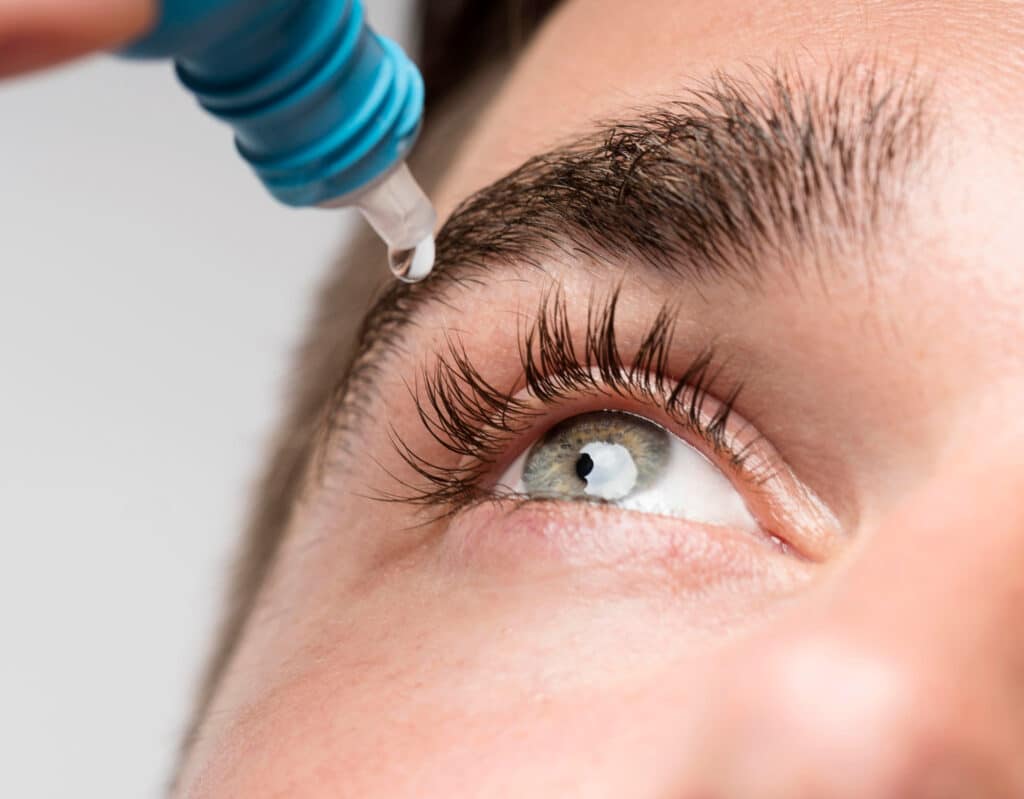
Corneal crosslinking (CXL) is a procedure designed to strengthen the cornea, the clear front part of your eye. It’s used to treat conditions like keratoconus and post refractive surgery corneal ectasia. Both are progressive eye diseases that can cause your cornea to thin and bulge. While CXL is a safe and effective procedure, it’s important to understand what to expect during your recovery.
Immediately After Surgery
- Pain and Discomfort: You will experience some pain and discomfort, this may include a burning, stinging, gritty or scratchy sensation in your eye. This is normal and can usually be managed with over-the-counter or prescription pain relievers.
- Blurry Vision: Your vision will be blurry or hazy immediately after the procedure. This is temporary and should improve as your eye heals.
- Light Sensitivity: Your eyes may be more sensitive to light. Wearing sunglasses and avoiding bright lights can help.
- Eye Drops: You’ll be prescribed eye drops, such as antibiotics to prevent infection and anti-inflammatory drops to reduce swelling and pain. It’s important to use these as directed by your doctor.
The First Few Days
- Healing Process: The cornea will gradually heal over the first few days. You may notice a gradual improvement in your vision and a decrease in pain. Generally by day five the pain is gone.
- Follow-Up Appointments: Your doctor will schedule follow-up appointments to monitor your healing progress and adjust your pain management plan if needed.
- Eye Drops: Continue to use the prescribed eye drops as directed by your doctor.
The First Few Weeks
- Continued Healing: Your cornea will continue to heal over the first few weeks. Your vision should continue to improve.
- Gradual Return to Activities: You can gradually return to your normal activities, as directed by your doctor. You may need to avoid certain activities like swimming for a certain period.
- Regular Follow-Up: Continue to attend your scheduled follow-up appointments with your doctor. They will monitor your progress and address any concerns you may have about pain or discomfort.
Long-Term Expectations
- Improved Vision: CXL is designed to slow or halt the progression of corneal diseases like keratoconus. While it will not restore your vision, it will prevent further deterioration. In some cases it may slightly improve vision but that is not the purpose of the treatment.
- Ongoing Eye Care: You’ll need to continue regular eye exams and follow your doctor’s recommendations for eye care.
Pain After Crosslinking
The most common questions about CXL are related to pain after the procedure, questions like “how painful is cross linking?” and “how long does the pain last after crosslinking?”. Pain after crosslinking is short lived, day 1 is typically the most painful day, each day after crosslinking the pain will substantially reduce. Pain is also subjective, variable from patient to patient, so if you are searching forums such as Reddit r/keratoconus or Facebook keratoconus support groups, patients will report everything from no pain at all to excruciating pain but the general consensus is that the pain is worse on day one and resolves within a few days.
Managing Pain After Crosslinking
As part of the crosslinking procedure your doctor will place a contact lens on your eye. This contact lens acts as a bandage to aid in pain relief and healing, it is generally removed in a few days once the eye has healed. Additionally your doctor may prescribe the use of over the counter analgesics such as Tylenol or Advil. Many times your doctor will recommend that you alternate taking Tylenol and Advil, every 4 hours to maximize pain relief. Some doctors will prescribe medications, such as pain relievers like Tylenol 3 or Percocet, or a sleep aid. Generally these oral medications are not needed but can be utilized typically 1 and 2 days after the procedure. By day 3 the worst pain has resolved and generally patients only experience a mild dryness sensation.
Important Note
Everyone heals differently, and your experience may vary. It’s important to communicate openly with your doctor about any pain or discomfort you may be experiencing. By following your doctor’s instructions and attending your follow-up appointments, you can help ensure a smooth and successful recovery from your CXL procedure.
Disclaimer: This article is for informational purposes only and should not be considered medical advice. Always consult with your doctor for personalized guidance and treatment.





